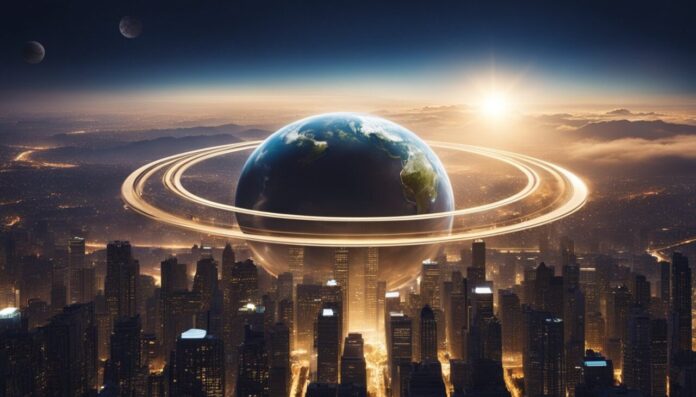
If Earth had rings, it would certainly be a wonderful sight to see. Namely, Saturn’s rings are one of the most iconic features of our solar system, and it’s natural to wonder what would our planet look like if it had rings.
However, one must also know that Earth’s hypothetical rings would differ from Saturn’s in one key way – they wouldn’t have ice.
Earth lies much closer to the sun than Saturn does, so radiation from our star would make it difficult for ice to exist in Earth’s ring system. Instead, Earth’s rings would be composed primarily of rock.
And so, before further exploring this hypothetical scenario, we need to first understand how are those rings standardly formed.
Namely, planetary rings are made up of countless particles that orbit the planet. These particles can range in size from tiny dust grains to large rocks. The particles are held in orbit around the planet by its gravity, and they’re constantly colliding with each other, creating a stunning display of debris.
Four planets in our solar system have rings, and those four planets are all so-called gas planets (Jupiter, Saturn, Uranus, and Neptune).
On the other hand, we have four so-called terrestrial or rocky planets (Mercury, Venus, Earth, and Mars) and as mentioned they do not have rings.
However, one must wonder if Earth had rings in the past.
Let’s see…
Related:
Did Earth Used To Have Rings?
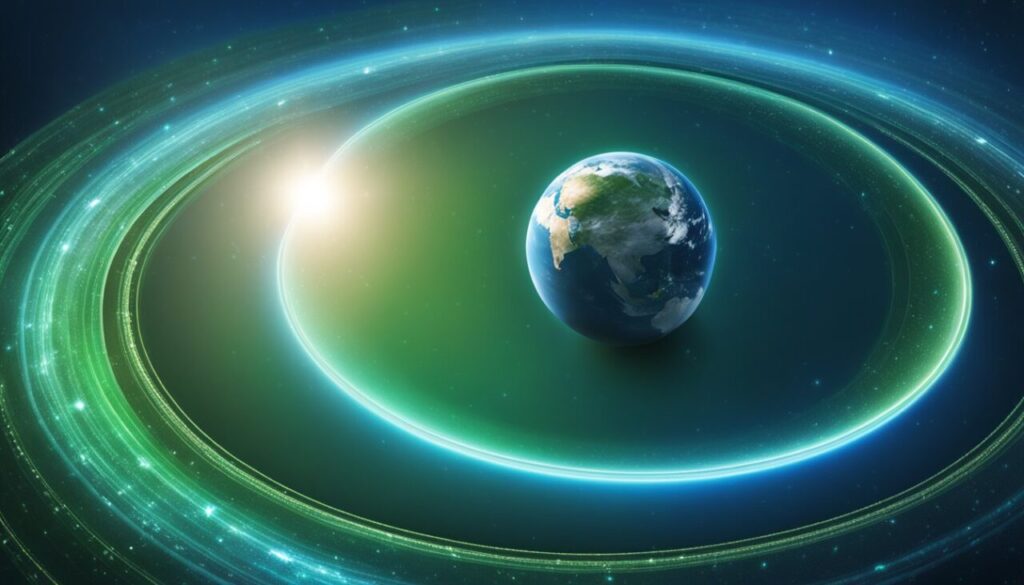
Scientists believe that Earth may have had rings in the past, similar to those of Saturn. The idea of Earth having rings in the past is not new, and it has been proposed by various scientists over the years.
Some Evidence of Earth’s ancient rings has been found in the form of moon rocks brought back by the Apollo missions.
These rocks contain tiny glass droplets that are similar in composition to the glassy particles found in Saturn’s rings. The glass droplets are believed to have formed when a large object, such as a comet, asteroid, or planet (Theia), collided with Earth and created a debris field that eventually coalesced into a ring.
Theories on the formation and disappearance of Earth’s rings are still being studied.
Some scientists believe that Earth’s rings were short-lived and disappeared soon after they formed, while others believe that they lasted for millions of years.
Ok, so whether the theory about Earth’s rings in the past is true or not the question of this article is – What If Earth Had Rings today?
What would happen then?
Let’s explore this in more details.
Hypothetical Scenario: Earth with Rings
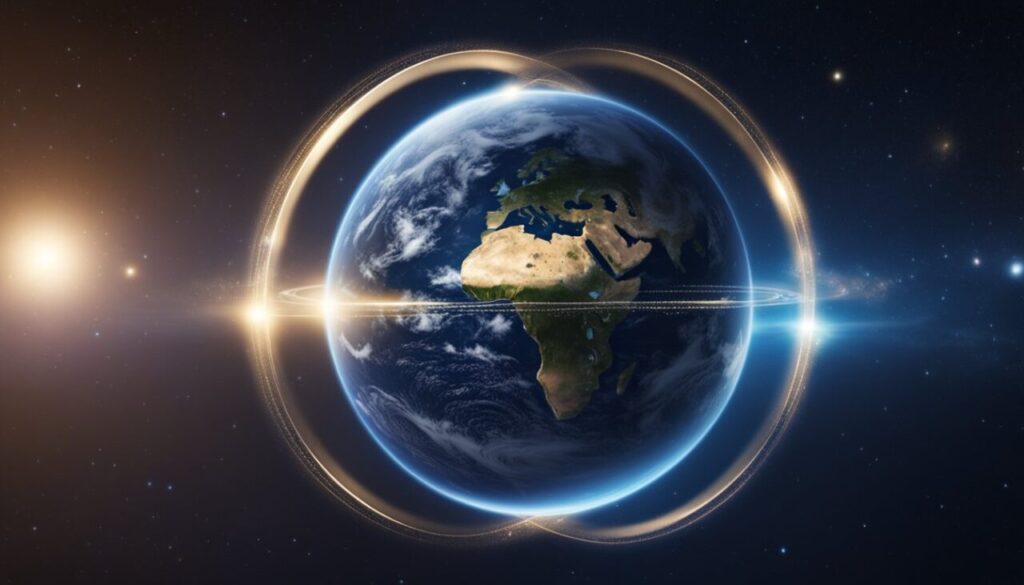
The most obvious change would be the appearance of Earth. The rings would look like a bright band of rocks encircling the planet.
However, as mentioned, Earth’s rings would not be made of ice, unlike Saturn’s rings. Instead, they would consist of rocks and dust particles. The rings would be visible from Earth, but they would not be as prominent as Saturn’s rings.
Additionally, the visual display of hypothetical rings would vary greatly depending on the observer’s location.
Rings around a planet would be most stable when situated along its equator, resulting in varying appearances based on latitude.
For example, in Columbia or Ecuador, near the equator, the rings would be visible from the inner edge, creating the impression of a slender line ascending directly from the horizon.
As you move farther from the equator, the appearance of the rings would undergo noticeable changes. They would widen significantly, becoming more prominent, and from certain vantage points, they might seem so close to the horizon that one could almost reach out and touch them.
Interesting, huh?
Now, this is all about visual appearance.
What about other potential consequences of Earth having rings?
Climate Effects & Rings
The presence of rings would have a significant impact on Earth’s climate. The rings would block some of the sunlight that reaches the planet’s surface, causing a decrease in temperature. This would result in a cooler climate, which could have both positive and negative effects on the planet’s ecosystem.
Tidal Forces and Sea Levels
The rings would also have an effect on Earth’s tides. The gravitational pull of the rings would create additional tidal forces, which could cause fluctuations in sea levels. The tides would be higher in areas where the rings are closest to the planet and lower in areas where they are farthest away.
Also, as we described in our article called “What Would Happen If Moon Disappeared”, without the moon, tidal forces on Earth would be completely different.
And there is a huge probability that if Earth had rings, it wouldn’t have its moon as we know it.
So this would cause even more pronounced changes in sea levels and tidal forces.
And what about the overall impact for us humans?
Earth With Rings: Impact on Human Life

If Earth had rings, it would have a significant impact on human life. Here are some of the ways in which it would affect us:
Changes in Daylight
If Earth had rings, it would change the amount and quality of daylight on Earth. The rings would cast shadows on different parts of the planet, affecting the amount of sunlight that reaches the surface. This could have an impact on plant growth and the behavior of animals that rely on daylight to regulate their activities.
Navigation and Communication
The presence of rings around Earth could also affect navigation and communication systems. Satellites and other space-based technology would need to be repositioned or redesigned to avoid collisions with the rings. This could be a significant challenge for space agencies and private companies that rely on these systems for communication and navigation.
Astronomy and Space Exploration
The presence of rings around Earth would also have a significant impact on astronomy and space exploration. The rings would make it more difficult to observe objects in space, as they would create additional light pollution and interfere with telescopes and other instruments.
However, the rings could also provide new opportunities for exploration and research, as they would be a unique feature of our planet that could be studied in detail.
Overall, the presence of rings around Earth would have a significant impact on human life and the planet as a whole.
Ecological Consequences
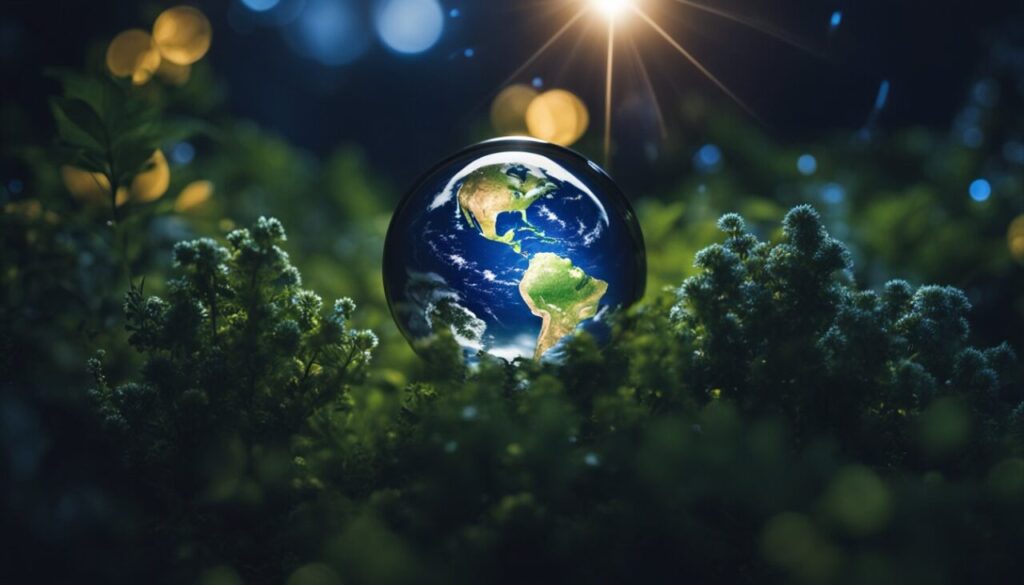
Effect on Plant Life
If Earth had rings, it would have a significant impact on the planet’s plant life. The rings would cast a shadow on the planet’s surface, reducing the amount of sunlight that reaches the plants. This could lead to a decrease in photosynthesis, which is essential for plant growth. As a result, plant growth could be stunted, and the number of plants on Earth could decrease.
On the other hand, the rings could also provide a source of nutrients for the plants. The rings would contain dust and other particles, which could fall to the planet’s surface and provide nutrients for the plants. This could lead to an increase in plant growth in areas where the particles fall.
Impact on Animal Behavior
The presence of rings could also have an impact on the behavior of animals on Earth. The change in the amount of sunlight reaching the planet’s surface could affect the behavior of diurnal animals. These animals are active during the day and rely on sunlight to regulate their activity levels. With less sunlight reaching the surface, these animals may become less active or alter their behavior.
Nocturnal animals, on the other hand, may be less affected by the presence of rings. These animals are active at night and are less reliant on sunlight to regulate their behavior. However, the presence of rings could still have an impact on their behavior. The rings could provide a new source of light at night, which could attract or repel certain animals.
Overall, the ecological consequences of Earth having rings are complex and varied. While the rings could provide a source of nutrients for plants, they could also reduce the amount of sunlight reaching the surface, affecting plant growth. The rings could also impact the behavior of animals on Earth, with diurnal animals being more affected than nocturnal animals.
Geological Implications
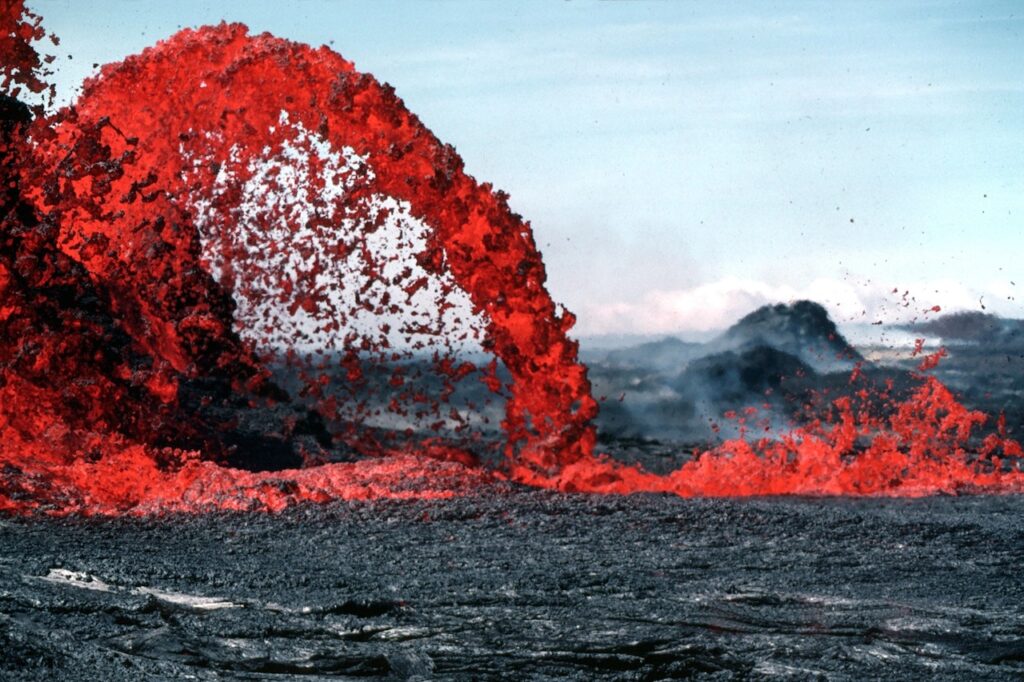
If Earth had rings, it would have significant geological implications. Here are some of the potential effects:
Tectonic Activity
The presence of rings around Earth could lead to changes in tectonic activity. The gravitational pull of the rings could cause stress on the Earth’s crust, potentially leading to increased volcanic activity and earthquakes. The rings could also cause changes in the Earth’s rotation and orbit, which could further affect tectonic activity.
Erosion Patterns
The rings could also have a significant impact on erosion patterns on Earth. The particles in the rings could collide with the atmosphere, causing increased erosion of the upper atmosphere. This could lead to changes in weather patterns and climate, as well as changes in the chemical composition of the atmosphere.
Conclusion
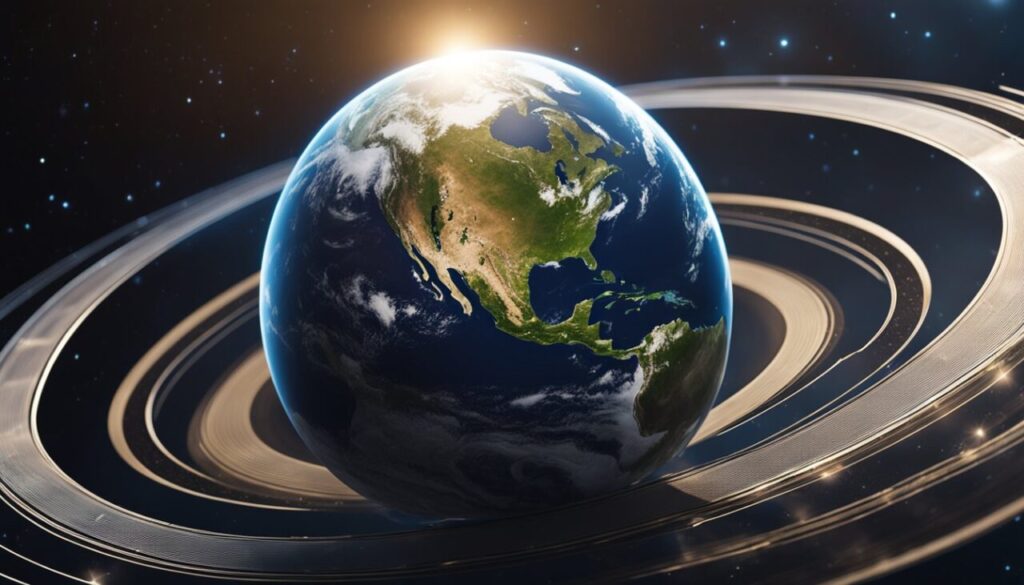
In summary If Earth had rings, their appearance would vary based on latitude, with the most stable configuration occurring around the equator. Near the equator, the rings would resemble a thin line rising from the horizon, while at higher latitudes, they would appear wider and more prominent.
Besides visual appearance their gravitational influence could impact the planet’s dynamics. Tidal forces might be more pronounced, affecting ocean tides and potentially influencing Earth’s rotation. Additionally, the presence of rings would pose challenges for satellite orbits and space missions.
And so, it is rather interesting to hypothesize about Earth having rings. They seem beautiful and something out of this world.
We’re still not sure if Earth ever had rings and we’re also not sure if Earth will have rings in the future.
And that’s why thought experimenting is always an interesting journey.
At the end let’s explore couple of FAQ’s regarding Earth and its potential rings.
Frequently Asked Questions
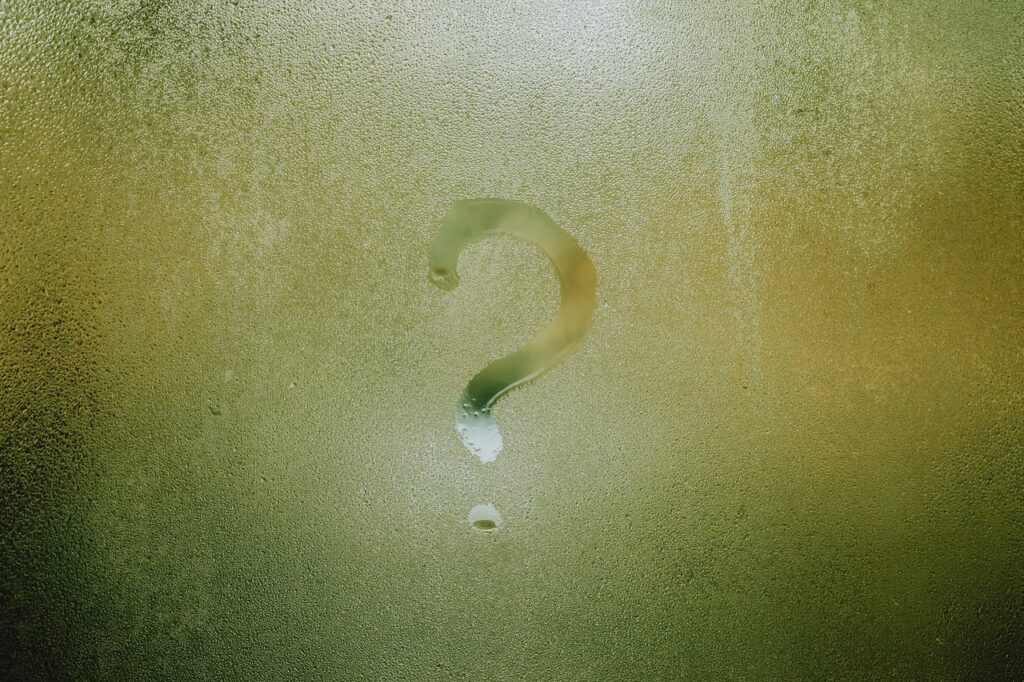
How many rings does Earth have?
Earth does not have any rings currently. Scientists believe that Earth had a ring once, but that was several billion years ago and it disappeared over time.
Why doesn’t Earth have rings like Saturn?
Saturn has rings because it has a lot of moons that orbit very close to the planet. These moons are constantly being bombarded by meteoroids and debris, which causes them to break apart and form rings. Earth only has one moon, and it is much farther away, so there is not enough debris to form rings.
Would we survive if Earth had rings?
If Earth suddenly had rings, it would not necessarily be catastrophic for life on Earth. However, there could be some negative effects. For example, the rings could block some of the sunlight that reaches the surface, which could affect photosynthesis and the growth of plants. Additionally, the rings could pose a hazard to satellites and spacecraft in orbit around Earth.
Is it possible for an Earth like planet to have rings?
Yes, it is possible for an Earth-like planet to have rings. In fact, astronomers have discovered several exoplanets that have rings. However, these planets are much larger than Earth and have more moons, which provides the necessary debris to form rings.
What if Earth had 2 moons?
If Earth had two moons, it would likely have a significant impact on the planet. The gravitational pull of the moons would affect the tides and could cause earthquakes and volcanic activity. Additionally, the two moons could collide with each other, which could create debris that could eventually form rings around Earth.
Will Earth eventually have rings?
It is possible that Earth could have rings again in the future. For example, if a large asteroid or comet were to collide with Earth, it could create a ring of debris. However, this is not likely to happen anytime soon, and even if it did, the ring would eventually dissipate over time.
Note: If you’re interested in similar articles, on topic of “What if”, you can check:
- What would happen If The Moon disappeared?
- What Would Happen If The Moon Exploded?
- What Would Happen If Jupiter Disappeared?
- What Would Happen If You Fell Into A Black Hole?
- What Would Happen If The Earth Stopped Spinning?
- What If Everyone On Earth Jumped At The Same Time?
- What would happen if gravity suddenly disappeared?




















